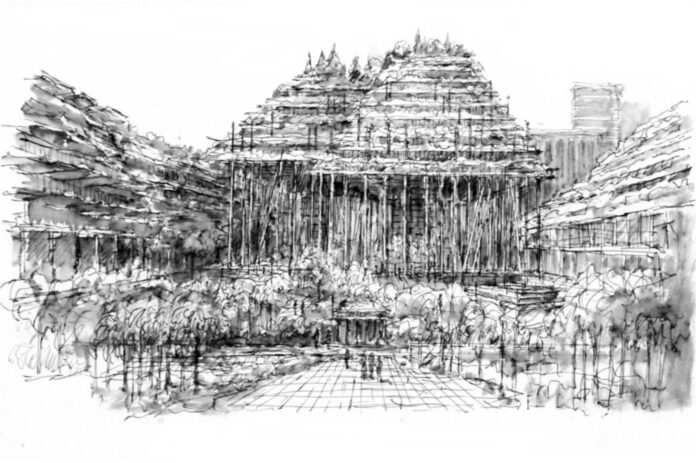The coronavirus pandemic’s impact has left the design scene in a state of unique ambivalence, where all of the qualifying rituals for success appear to be in head-on collision with reality. As an artist/architect, dedicated to conceptual, theoretical and aesthetic priorities, it makes me feel a little like the proprietor of a pricey restaurant, with closely spaced tables, forced to operate in a world of social distancing.
The urgency of my services seems problematic, to say the least. No end in sight regarding this global scenario of health threats, economic peril and political
Conflict. This situation has decimated all of those career-based assumptions of a seasoned practitioner. And you can questioning all of the routinely endorsed criteria for commercial development, energy consumption, housing standards, construction economics and public space planning.
As an artist who invaded architecture through the back door, I can say that for me, working in this hybrid context, has been a scenario of mixed blessings.
My commitment to the integrative arts has generated a roller coaster combination of critical controversy, professional rejection, economic instability, conceptual innovation, media attention, artistic satisfaction and a few moments of glory along the way.
The main challenge, for me, has been actually practicing this fusion of the arts. It has meant that both clients and audience were required to share my juxtaposition-of-specializations approach and feel comfortable with unconventional aesthetic relationships. In an 1987 book, entitled ‘De-architecture,’ I described this mission as follows; “When I ventured into between the arts territories during the late 1960’s, I began to use the connections linking art and architecture as a hybrid middle ground, which I referred to as arch-art.” (I quote from my book entitled De-architecture, 1987).
Marcel Duchamp wisely observed that “to be truly creative in life means you have to clean off your desk at least three times.”
From my own ‘desk cleaning’ perspective, during the 1960s, I had already
dismissed all of the regressive academic baggage from college, rejected my early art works and questioned the artistic relevance of my public sculpture (which had flourished successfully up until the late 60s). Encouraged by the great Austrian architect Frederick Kiesler – who advised me to abandon all of that old-fashioned involvement with abstract art – I discarded a Constructivist-influenced sculpture career and plunged into architecture.
Since I had embarked on this transformation with limited experience and naïve ambitions, my most judicious decision was to register my new organization (SITE) as a 501C3 non-profit organization. And this allowed me to receive foundation grants for funding. Among the extra support of a few of my existing art patrons, there are the collectors Sidney and Frances Lewis and also David Bermant. I could engage
their interest in SITE’s evolving theories and propositions. This financial assistance gave me time to think, organize an office structure and attract the attention of both art and architecture media.
In a post-pandemic world we will deal with the realities of reduced budgets and with a questionable need for new habitat and the conflicts between burgeoning populations, versus the demands of a reduced scale for buildings. Historically, the establishment of entirely new paradigms has usually taken hundreds of years; so, this option must remain in the realm of revolutionary theory and painfully slow transformation.
In terms of immediate territories to pursue for design practice survival, my list includes: a) increase the adaptive re-use of existing buildings; b) intensify research on alternative energy sources; c) multiple approaches to transportation and
new choices of heating and cooling; d) offer proposals for a reduction in the use of toxic, off-gassing and petroleum-based building materials; e) broaden the application of 3D modeling for creative design and construction technology; f) focus more research on multi-layered urban development and public space that satisfies requirements for both social distancing and crowd clustering; g) expand the options for more city-oriented vegetation, green roofs and urban agriculture; h) explore inventive means for reducing the size of dwelling spaces; but, also dealing with the actuality of burgeoning populations; i) innovate with modestly scaled building
solutions that improve visual communication and quality-of-life values, while avoiding the current design world’s use of expensive materials and aesthetic propensity for massive sculptural configurations.
All this in spite of and beyond the current pandemic. In fact, some of the greatest creative explosions in history – the Italian Renaissance, as case in point – flourished during the most plague-ridden, politically conflicted and war-ravaged times.








